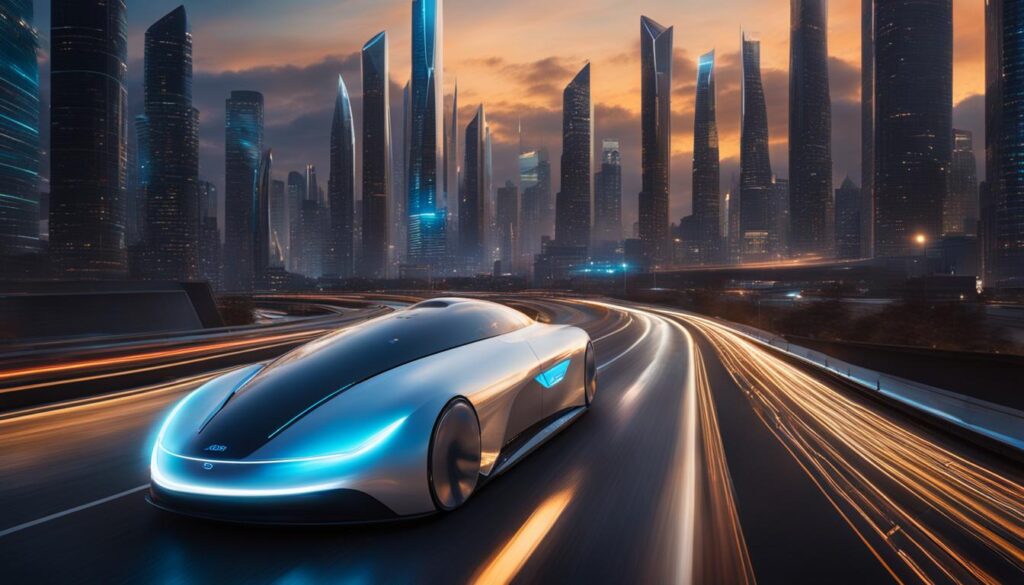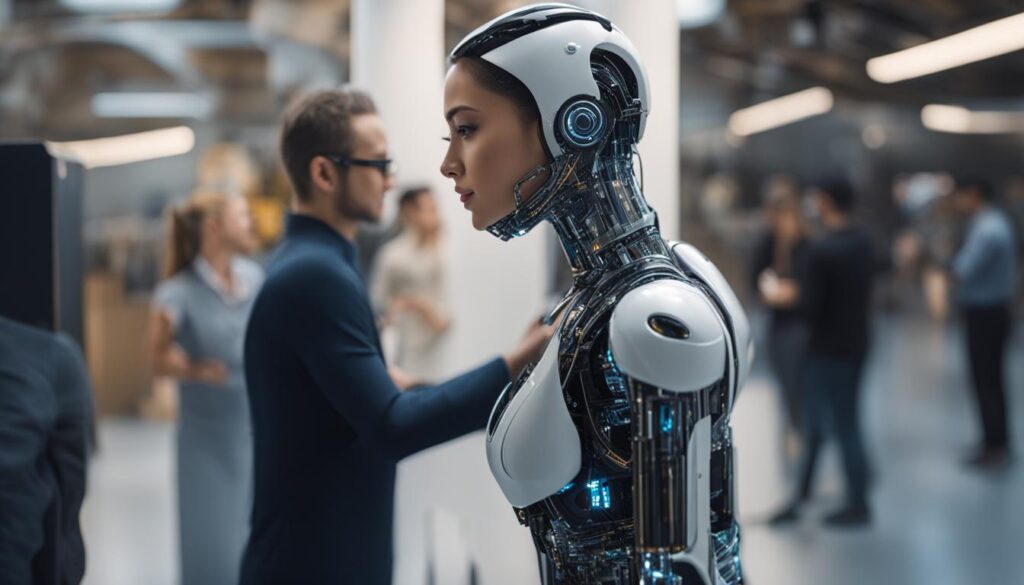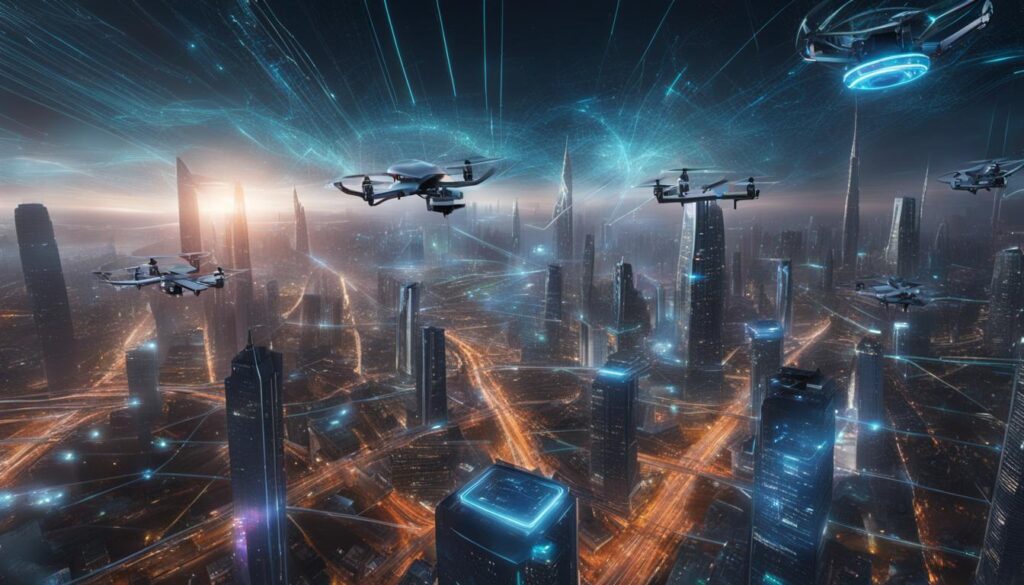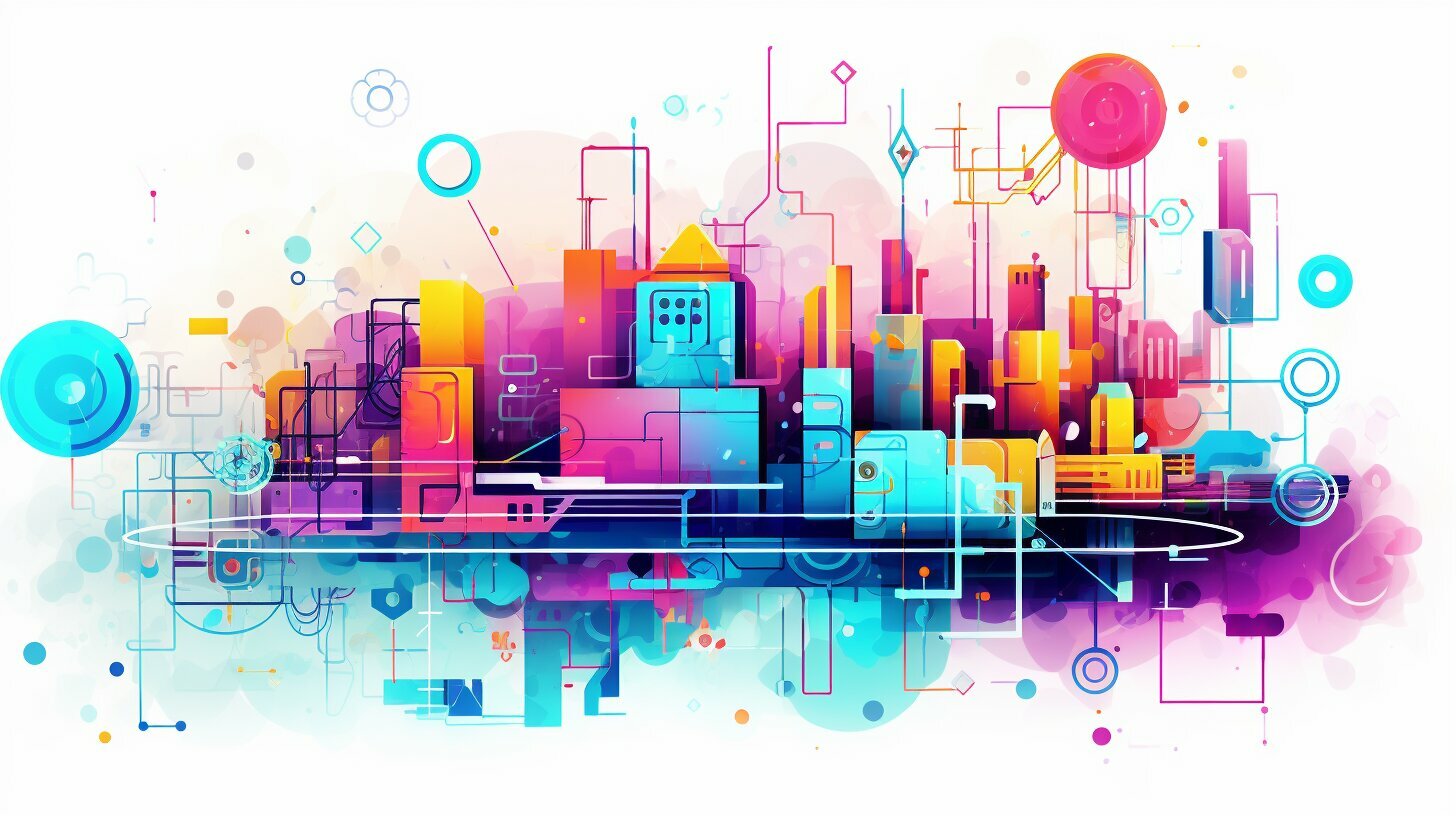Artificial Intelligence is rapidly advancing, and 2024 is expected to be a year filled with groundbreaking breakthroughs in this field. These advancements will greatly change how we interact with technology and reshape many industries, offering solutions to complex issues along the way. Check out our overview of the top 10 AI trends that will influence the future landscape in 2024.
Key Takeaways:
- AI is set to deliver more natural and intuitive human-AI interactions, enhancing communication and collaboration.
- The development of autonomous vehicles and intelligent transport systems will continue to progress, making our roads safer and more efficient.
- AI-powered solutions will play a crucial role in addressing environmental challenges and promoting sustainability.
- Advancements in Natural Language Processing (NLP) will lead to improved speech recognition and text analysis.
- AI-powered cybersecurity systems will employ machine learning and behavioral analysis to combat complex cyber threats.
Advanced Human-AI Interaction
In 2024, we can expect significant advancements in human-AI interaction, revolutionizing the way we communicate and collaborate with artificial intelligence. These breakthroughs will bridge the gap between humans and machines, making AI a seamless and integrated part of our daily lives.
New and intuitive interfaces will emerge, enabling more natural and effortless interactions with AI systems. One such interface is gesture control, which allows users to communicate with AI through hand movements and gestures. This technology will streamline tasks and enhance efficiency, improving our overall experience with AI.
“The advancements in human-AI interaction will transform the way we work and interact with technology. By making AI more accessible and user-friendly, we can leverage its full potential and benefit from its capabilities.” – AI industry expert
Enhanced collaboration between humans and AI will also be a key focus in 2024. AI systems will be designed to complement human skills and expertise, enabling teams to work more effectively and achieve better outcomes. Through improved communication and collaboration, AI will augment human capabilities, leading to increased productivity and innovation.
Future of Human-AI Interaction
The future of human-AI interaction holds immense potential. As AI systems continue to evolve, we can anticipate even more intuitive interfaces and enhanced communication channels. Imagine a world where AI understands our emotions and responds accordingly, adapting its behavior to suit our individual needs. This level of personalization will transform the way we interact with technology, making it a truly integral part of our lives.
In conclusion, advanced human-AI interaction is set to redefine the relationship between humans and machines in 2024. With new interfaces and improved collaboration, AI will seamlessly integrate into our daily routines, empowering us to achieve more and solve complex problems with ease.

Intelligent Transport Systems and Autonomous Vehicles
In the realm of transportation, intelligent systems empowered by artificial intelligence (AI) are paving the way for a future of increased efficiency, safety, and convenience. The year 2024 is set to witness significant advancements in intelligent transport systems (ITS) and autonomous vehicles, transforming the way we travel and commute.
Autonomous vehicles, enabled by AI algorithms, offer the promise of safer roads and enhanced traffic flow. These vehicles possess the capability to recognize and react to the environment, making real-time decisions to avoid potential accidents and reduce congestion. By leveraging data from sensors, cameras, and communication networks, AI-powered autonomous vehicles become active participants in the transportation ecosystem, helping to streamline operations and optimize resource allocation.
Intelligent transport systems, on the other hand, encompass a broader spectrum of AI-driven solutions that improve the functionality and sustainability of transportation networks as a whole. AI algorithms enable traffic management systems to dynamically analyze and regulate traffic flow, optimizing routes and reducing delays. This technology also empowers public transport systems to enhance schedules and operations, making commuting more efficient for millions of people.
Moreover, AI in transportation extends beyond road networks. Autonomous drones and AI-powered delivery systems have the potential to revolutionize the logistics industry, facilitating faster and more cost-effective shipping. By utilizing advanced planning algorithms and machine learning, these systems can optimize parcel delivery routes, reduce carbon footprint, and enhance last-mile delivery capabilities.

In summary, the year 2024 will witness remarkable progress in the field of intelligent transport systems and autonomous vehicles, driven by the power of AI. These developments aim to create a transportation landscape that is safer, more efficient, and environmentally sustainable. With AI at the helm, our journey towards a smarter, interconnected future will continue, bringing us closer to a seamless and enjoyable travel experience.
AI For The Environment
In 2024, AI technologies will continue to play a significant role in addressing environmental challenges and promoting sustainability. We are witnessing a growing need for innovative solutions that can optimize energy consumption, maximize renewable energy utilization, and reduce pollution. AI offers the potential to tackle these complex issues and build a greener future for all.
One key area where AI can make a difference is energy efficiency. By leveraging advanced data analytics and machine learning algorithms, AI systems can optimize the energy usage of various sectors, including buildings, transportation, and manufacturing. These systems can analyze energy patterns, identify inefficiencies, and suggest targeted strategies to minimize waste and reduce carbon emissions.
Moreover, AI can also contribute to sustainable resource management. With its ability to process and analyze large amounts of data, AI can help monitor and conserve natural resources such as water, forests, and wildlife. By providing real-time insights and predictive analytics, AI systems can support more efficient decision-making and conservation efforts.
| AI Applications for the Environment | Benefits |
|---|---|
| Smart Grid Management | Optimizes energy distribution, reduces power outages, and integrates renewable energy sources. |
| Precision Agriculture | Enables targeted use of fertilizers and pesticides, reducing environmental impact and improving crop yields. |
| Waste Management | Improves waste sorting and recycling processes, reducing landfill usage and promoting circular economy practices. |
| Climate Modeling | Helps simulate and predict climate patterns, supporting climate change mitigation and adaptation strategies. |
| Environmental Monitoring | Enables real-time data collection and analysis for monitoring air quality, water quality, and biodiversity. |
AI technologies offer immense potential to address environmental challenges and drive sustainable practices. Through advanced data analytics, machine learning, and real-time monitoring, AI systems can optimize energy usage, support resource conservation, and enhance decision-making in various environmental sectors. By harnessing the power of AI, we can pave the way for a more sustainable and eco-friendly future.
Advanced Human-AI Interaction
In 2024, we can expect significant advancements in the field of advanced human-AI interaction. These developments will revolutionize the way we communicate and collaborate with AI systems, making them more natural and intuitive.
New interfaces, such as gesture control and voice recognition, will enable humans to interact with AI in a more seamless and efficient manner. Imagine being able to control your smart home devices with a simple wave of your hand or having a conversation with your virtual assistant that feels as natural as talking to a friend.
“The advancements in advanced human-AI interaction will bridge the gap between humans and machines, allowing us to harness the power of AI in a more intuitive and user-friendly way.”
These improvements in human-AI interaction will have a substantial impact across various industries. For example, in healthcare, doctors will be able to collaborate with AI systems to analyze complex medical data and make more accurate diagnoses. In the education sector, AI-powered virtual tutors will provide personalized learning experiences tailored to each student’s needs. The possibilities are endless.
Enhancing Collaboration with AI
One of the key benefits of advanced human-AI interaction is its ability to enhance collaboration between humans and machines. AI systems will become more than just tools; they will become trusted partners that complement our skills and capabilities.
Through improved natural language processing and speech recognition capabilities, AI systems will better understand and respond to human commands and queries. This will enable seamless teamwork between humans and AI, leading to increased productivity and efficiency in various domains.
For example, in the business world, AI-powered virtual assistants will be able to draft emails, schedule meetings, and perform other administrative tasks, allowing professionals to focus on high-level strategic work. In creative industries, AI systems will assist artists and designers by generating ideas and providing real-time feedback, pushing the boundaries of human creativity.
As we move forward into 2024, the advancements in advanced human-AI interaction will shape how we live, work, and interact with technology. These developments will bring us closer to a future where AI seamlessly integrates into our daily lives, making it easier for us to harness its power and potential.

AI Cyber-Systems
In 2024, the role of AI in cybersecurity will become increasingly vital. With cyber threats becoming more sophisticated and prevalent, AI-powered security solutions will be instrumental in detecting, preventing, and defending against potential attacks.
AI cyber-systems will employ machine learning algorithms and behavioral analysis to identify patterns and anomalies in network traffic, flagging any suspicious activity. By continuously analyzing vast amounts of data, these systems can stay one step ahead of cybercriminals.
One of the significant advantages of AI-powered cybersecurity is its ability to adapt and evolve. These systems can learn from new threats and update their defense mechanisms accordingly, making them highly effective in safeguarding against emerging security risks.
Furthermore, AI cyber-systems can automate processes such as threat detection and incident response, streamlining security operations and freeing up human resources for more complex tasks. This automation can significantly reduce response times, minimizing the impact of potential breaches and enabling organizations to respond swiftly and effectively.
Benefits of AI-Powered Cybersecurity:
- Improved threat detection capabilities
- Rapid response and remediation to potential attacks
- Automation of security operations
- Continuous learning and adaptation to new threats
“AI-powered cybersecurity systems offer unparalleled protection against evolving cyber threats, allowing organizations to focus on their core operations with peace of mind.”
As cybercrime continues to pose a significant threat to businesses and individuals alike, investing in AI-powered cybersecurity solutions will be crucial in safeguarding digital spaces and sensitive data in 2024 and beyond.
| Key Advantages of AI Cyber-Systems | Examples |
|---|---|
| 1. Advanced Threat Detection | Identifying and analyzing suspicious network activity |
| 2. Automated Incident Response | Efficiently and swiftly responding to potential breaches |
| 3. Continuous Learning and Adaptation | Staying up-to-date with new threats and evolving defense mechanisms |
| 4. Streamlining Security Operations | Automating routine security tasks, freeing up resources for complex issues |
| 5. Enhanced Protection and Peace of Mind | Ensuring robust cybersecurity measures against evolving threats |

Higher-Level Automated Decision-Making
In 2024, the world of AI will witness a significant advancement in automated decision-making. Through the utilization of machine learning algorithms, AI systems will gain the capacity to process vast amounts of data, identify patterns, and make complex decisions. This evolution will have far-reaching implications across various industries, enabling businesses to streamline and optimize their operations.
One key area where AI will make a profound impact is finance. Automated decision-making algorithms can analyze market trends, predict future outcomes, and assist in making data-driven investment decisions. This technology will enhance the efficiency and accuracy of financial transactions, benefiting both individuals and organizations.
In the healthcare sector, AI-powered decision-making will revolutionize patient care. By analyzing medical data and patient histories, AI systems will help healthcare professionals in diagnosing diseases, determining treatment plans, and predicting outcomes. This level of automation will lead to more personalized and efficient healthcare delivery.
Table: Applications of AI in Decision-Making
| Industry | Applications |
|---|---|
| Finance | Automated investment decisions, risk assessment, fraud detection |
| Healthcare | Disease diagnosis, treatment planning, patient monitoring |
| Logistics | Route optimization, inventory management, demand forecasting |
| E-commerce | Product recommendations, personalized marketing campaigns |
Moreover, industries such as logistics and e-commerce will benefit from automated decision-making. AI algorithms can optimize supply chain management, improve inventory efficiency, and enhance route planning, leading to cost savings and improved customer satisfaction.
While the adoption of AI in decision-making holds immense potential, ethical considerations are crucial. Transparent and accountable decision-making processes must be established to ensure fairness and mitigate bias. Industry standards and guidelines will play a vital role in governing the use of AI systems for making high-stakes decisions.
In summary, as we step into 2024, AI-powered automated decision-making will enable businesses to leverage data for more informed choices. From finance to healthcare, logistics to e-commerce, the impact of higher-level decision-making algorithms will reshape how industries operate, leading to increased efficiency and improved outcomes.
Responsibility and Ethics in AI
In the fast-paced world of artificial intelligence, it is essential to pause and consider the ethical implications of our creations. As AI continues to advance and integrate into various aspects of our lives, responsible AI use becomes a paramount concern in 2024.
At the forefront of AI ethics discussions are topics such as transparency, fairness, and accountability. We must strive to develop guidelines and standards that ensure AI systems are designed and deployed in a way that benefits society as a whole. By establishing clear rules and regulations, we can mitigate potential biases and prevent AI from perpetuating discrimination or harm.
Moreover, responsible AI use extends beyond just the technical aspect. It also includes the social and environmental impact of AI technologies. We need to consider the implications of AI in job displacement, cybersecurity, data privacy, and the environment. These considerations will guide us in developing AI systems that are aligned with our values and serve the greater good.
The Importance of Ethical AI
AI systems have the potential to make decisions that impact people’s lives in significant ways. It is crucial to ensure that these decisions are made responsibly and ethically. By embracing AI ethics, we can safeguard against biased algorithms, protect individual privacy, and promote trust in AI technologies.
“We must strive to develop guidelines and standards that ensure AI systems are designed and deployed in a way that benefits society as a whole.”
The Role of Collaboration
Building responsible AI systems requires collaboration between technologists, policymakers, and the broader society. Ethical considerations must be integrated into the development lifecycle of AI technologies. This includes involving diverse perspectives, conducting ethical audits, and implementing mechanisms for ongoing monitoring and accountability.
| Key Components of Responsible AI | Examples |
|---|---|
| Transparency | Providing clear explanations of AI decision-making processes |
| Fairness | Addressing bias and ensuring equal treatment for all individuals |
| Privacy | Protecting personal data and ensuring user consent |
| Accountability | Establishing mechanisms for oversight and responsible use |
By prioritizing responsibility and ethics in AI, we can shape a future where AI technologies enrich our lives, empower individuals, and contribute to a more inclusive and sustainable society.
AI in Healthcare and Medicine
In 2024, the impact of AI in the healthcare sector will be more profound than ever before. AI technology is set to revolutionize the way we approach healthcare, offering innovative solutions that enhance patient care and outcomes.
AI systems will assist healthcare professionals in various areas, including diagnosis, treatment planning, and personalized medicine. By analyzing complex medical data, AI can help identify diseases at an early stage, leading to more proactive and effective treatment strategies.
Furthermore, AI-powered systems can provide valuable insights and information to healthcare providers, enabling them to make well-informed decisions and deliver personalized healthcare to each patient. From recommending the most suitable treatment options to predicting patient responses, AI will optimize the delivery of care and improve patient outcomes.
FAQ
What are the 10 most important AI trends for 2024?
The 10 most important AI trends for 2024 include advancements in human-AI interaction, intelligent transport systems, AI for the environment, natural language processing (NLP) expertise, AI cyber-systems, higher-level automated decision-making, responsibility and ethics in AI, and AI in healthcare and medicine.
How will AI improve human-AI interaction in 2024?
In 2024, AI systems will offer more natural and intuitive interactions. New interfaces, such as gesture control, will make it easier for humans to work alongside AI, enhancing communication and collaboration between humans and machines.
What advancements can we expect in intelligent transport systems and autonomous vehicles in 2024?
In 2024, AI algorithms will enable autonomous vehicles to recognize and control the environment, making them safer and more efficient. The aim is to improve traffic flow and reduce accidents on the roads.
How will AI contribute to addressing environmental challenges in 2024?
AI technologies will optimize energy consumption, maximize renewable energy utilization, and reduce pollution in 2024. These solutions will help build a greener and more sustainable future.
What are the expected advancements in Natural Language Processing (NLP) in 2024?
In 2024, AI systems will better understand and work with human language, leading to improved speech recognition, translation capabilities, and text analysis. This progress in NLP will enhance the overall effectiveness of AI technologies.
How will AI contribute to cybersecurity in 2024?
In 2024, AI-powered security solutions will employ machine learning and behavioral analysis to detect, prevent, and defend against potential cyber attacks. This trend is essential in ensuring the safety of our digital spaces.
How will AI systems make complex decisions in 2024?
In 2024, AI systems will sift through vast amounts of data, identify patterns, and make smart choices using algorithms and machine learning. This development will have significant implications in fields such as finance, healthcare, and logistics.
What are the key considerations regarding responsibility and ethics in AI in 2024?
In 2024, discussions on responsible AI use and the development of guidelines and standards will intensify. The aim is to ensure that AI systems are fair, transparent, and safe as they continue to shape our world.
How will AI impact the healthcare sector in 2024?
In 2024, AI systems will assist in areas such as diagnosis, treatment planning, and personalized medicine. By analyzing complex medical data and providing relevant information to healthcare professionals, AI will revolutionize the way we approach healthcare.









